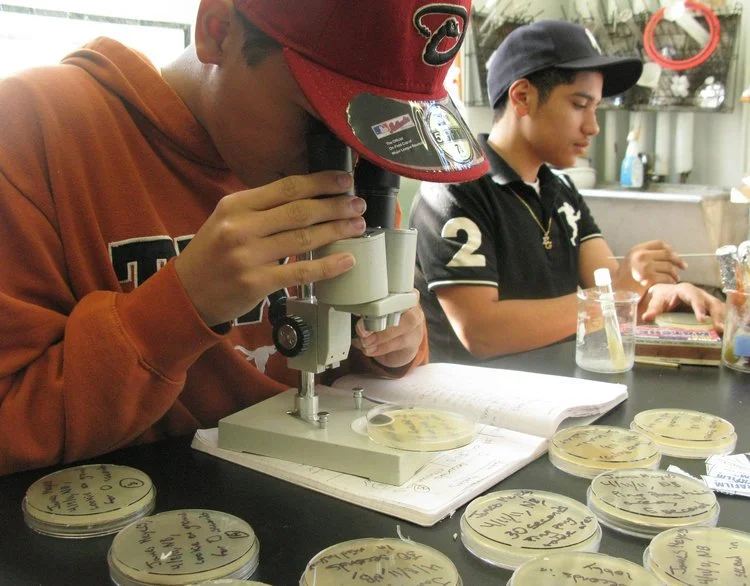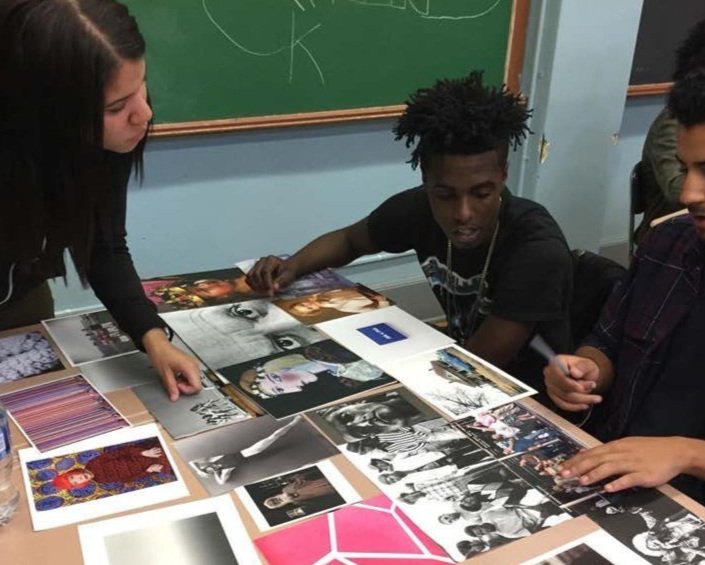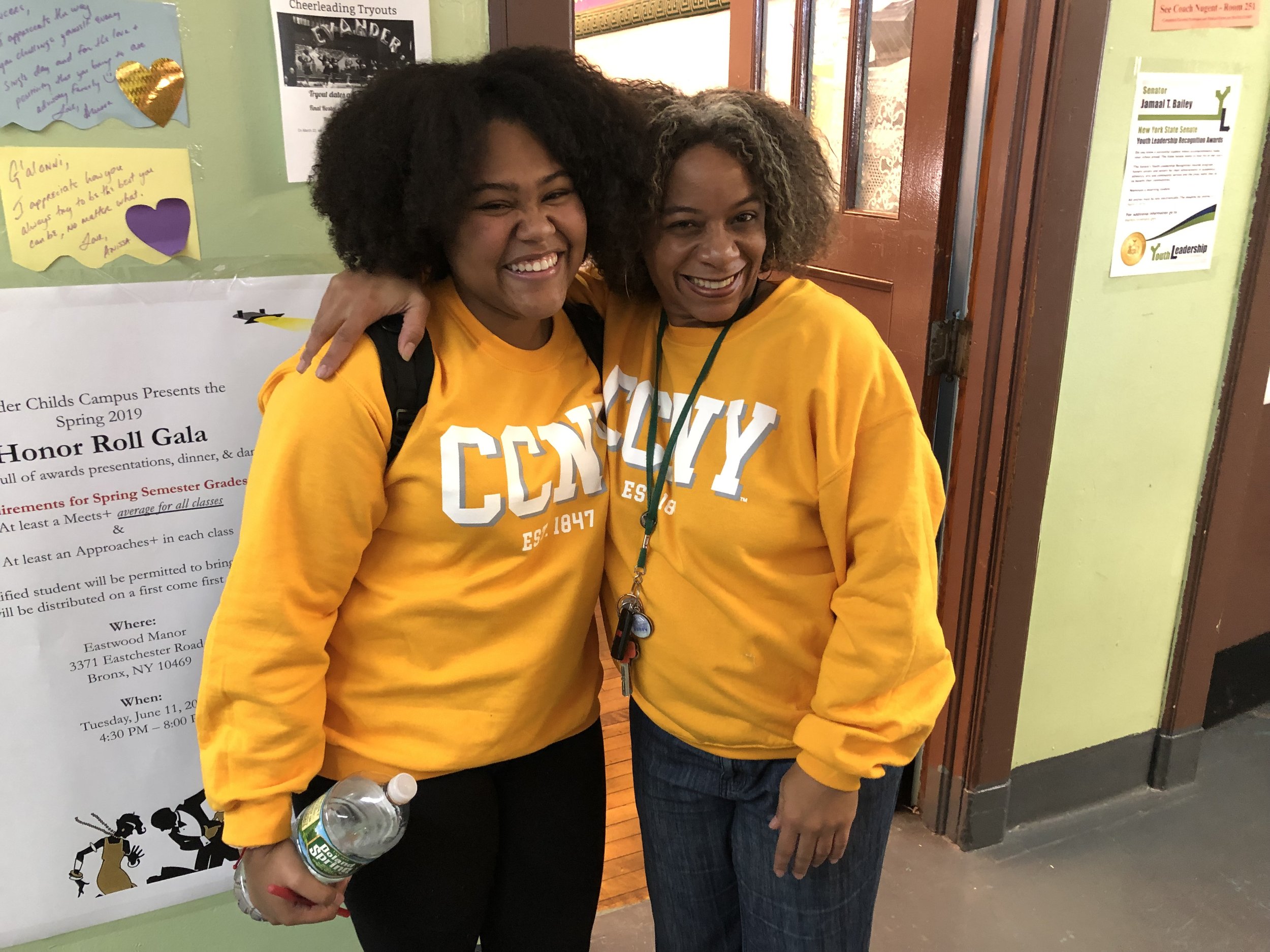Educators, parents, and students have decried the excessiveness of standardized testing, the limitations it places on curriculum and school culture, and the racial and economic inequities it contributes to.
The NY Performance Standards Consortium has created and documented another option: a performance assessment system that not only graduates students at remarkable rates and prepares them to thrive in college but also instills meaning and a sense of purpose back into the classroom.
An assessment system should grow out of curriculum and reflect a holistic picture of what students know and can do.
“It's not just memorizing the content. It's about understanding it, and being able to use what you're learning.”
- Consortium Graduate & First Generation College Student at CUNY
The Consortium Assessment System
In the Consortium’s performance assessment system, assessment tasks grow out of the work of the classroom. They are not imposed on curriculum, a process that inevitably leads to teaching-to-the-test. Tasks become possibilities for assessment only after students and teachers have studied the material, discussed and debated it, and subjected it to their questions and writing.
Out of this engagement and the relationships it develops in the classroom, both teacher and student become the creators of the task and take ownership of it.
The foundation of the Consortium assessment system, making it distinct from even other systems currently labeled performance assessment, is the professionalism of its teachers and the opportunity for student voice and choice.
None of these vital components is possible in an assessment system that is pre-packaged, top-down, standardized, and unresponsive to the dynamic life of the classroom.
Our Approach To Performance Assessment
The assessment process begins with students’ enrollment. Our schools’ literacy-based culture focuses on extensive reading, writing, and discussion across content areas in every grade, building towards the graduation-level performance-based assessment tasks, known as PBATs. All Consortium students prepare PBAT papers and oral presentations:
Analytic essays on literature
Social studies research papers
Lab reports of original science experiments or engineering designs
Narratives of the process and solution of mathematical problem solving
Individual schools also add tasks in the arts, art criticism, World Language, internship, or other areas.
Graduation-level PBATs are evaluated by external assessors using Consortium rubrics for both writing and oral presentations. In addition, a series of interim assessments, roundtables, classroom argumentation based on content and evidence, creative and first-person writing, and hands-on projects all prepare students for their final PBATs.
Consortium teachers commit to the many layers of work and collaboration required to support performance assessment. They design challenging curricula and tasks, respond to student interests and needs, develop and revise rubrics, and participate in Consortium and school-based professional development. Collaboration is extensive, from observing each other’s classrooms, to serving as external evaluators, sharing curriculum, and evaluating each other’s assignments and student work at bi-annual moderation studies. The professionals who participate in Consortium schools share a unique role in the ongoing history of education in the U.S.
How It Works
The Consortium’s assessment system comprises an integrated set of four components, each one vital to the success of the others and all dependent upon the professionalism of its teachers, the support they provide each other, and the active involvement of students.
Inquiry-Based Practitioner-Developed Curriculum
All content areas are inquiry and literacy-based, focus on extensive reading, writing, discussion, and critical thinking, and build towards the graduation-level performance-based assessment tasks (PBATs). Teachers design challenging, culturally-responsive curricula that respond to student interests and questions. Interim assessments help students develop the skills and mindsets needed to successfully complete their graduation-level PBAT work.
Graduation-Level Performance-Based Assessments
Students must complete graduation-level written PBATs and present their work orally. For both papers and presentations, external evaluators use rubrics developed by Consortium teachers. These PBATs include an analytic literary essay, a social studies research paper, an original or extended science experiment or engineering design, and a narrative describing the mathematical thinking used to solve a challenging math problem. Schools may add on additional performance tasks, for example, in creative arts, World Language, and internships. Students must also pass the NYS English Language Arts Regents exam.
Professional Development & Collaboration
Extensive teacher-led professional development occurs at the Consortium’s Center for Inquiry and at individual schools. Consortium teachers and staff collaborate on curriculum and rubrics, design courses that are content-rich and support student questioning and voice, author books and articles, annotate recommended reading lists, serve as mentors for each other and lead workshops throughout the year.
Internal & External Accountability
Teachers collaborate across schools to design and revise Consortium PBAT rubrics in each discipline. They also participate in bi-annual moderation studies, evaluating both student work and the assigned tasks. External evaluators use the Consortium rubrics to evaluate student papers and presentations.
In each school district (NYC, Rochester, Ithaca) Consortium schools are evaluated by local superintendents, members of the Performance Assessment Review Board (PAR Board), and are subjects of research conducted by prominent educators from colleges and universities. Predictive validity is achieved through college attendance data.








